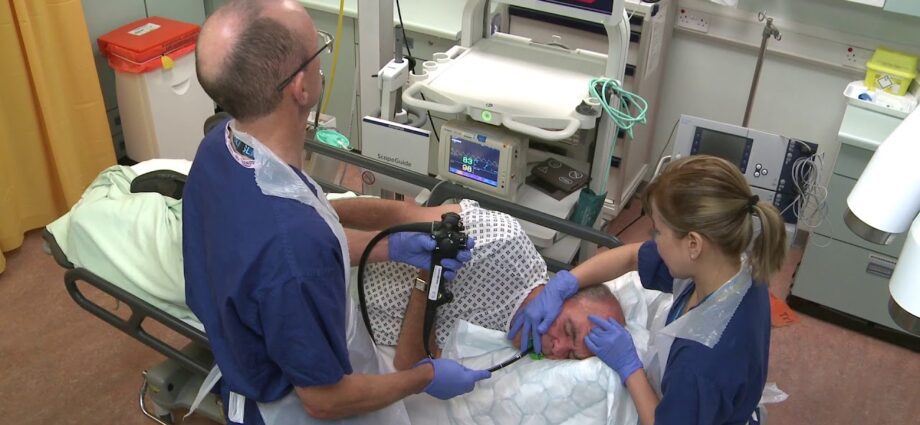Contents
Gastroscopy, what is it?
Gastroscopy is a test to visualize damage to the esophagus, stomach, and duodenum. It can also be used for the treatment of some of these lesions.
Definition of gastroscopy
Gastroscopy is a test that visualizes the inner lining of the stomach, esophagus, and duodenum. It is an endoscopy, that is to say an examination allowing to visualize inside the body using an endoscope, a flexible tube equipped with a camera.
The gastroscopy allows above all to visualize the stomach, but also the esophagus, the “tube” which connects the stomach to the mouth, as well as the duodenum, the first segment of the small intestine. The endoscope is introduced through the mouth (sometimes through the nose) and “pushed” to the area to be observed.
Depending on the instrument used and the purpose of the operation, gastroscopy can also take biopsies and / or treat lesions.
When is gastroscopy used?
This examination is the reference examination in the event of digestive symptoms requiring visual exploration. This may be the case, among others:
- persistent pain or discomfort in or just above the stomach (epigastric pain). We also speak of dyspepsia;
- persistent nausea or vomiting with no obvious cause;
- difficulty swallowing (dysphagia);
- gastroesophageal reflux, in particular to diagnose esophagitis or in the event of so-called alarm signs (weight loss, dysphagia, hemorrhage, etc.);
- presence of anemia (iron deficiency anemia or iron deficiency), to check for an ulcer, among others;
- presence of digestive bleeding (hematemesis, ie vomiting containing blood, or faecal occult blood, ie black stool containing “digested” blood);
- or to diagnose a peptic ulcer.
As for biopsies (taking a small sample of tissue), they may be indicated according to the High Authority for Health, among others in the following cases:
- iron deficiency anemia with no identified cause;
- various nutritional deficiencies;
- isolated chronic diarrhea;
- evaluation of the response to the gluten-free diet in celiac disease;
- of suspicion of certain parasitoses.
On the therapeutic side, gastroscopy can be used to remove lesions (such as polyps) or to treat esophageal stenosis (a narrowing of the size of the esophagus), using the insertion of ‘a balloon for example.
Course of the exam
The endoscope is introduced through the mouth or through the nose, after local anesthesia (spray sprayed into the throat), most often lying down, on the left side. The actual exam only lasts a few minutes.
It is imperative to be fasting (without eating or drinking) for at least 6 hours during the examination. It is also asked not to smoke in the 6 hours preceding the intervention. This is not painful but can be unpleasant, and cause some nausea. It is advisable to breathe well to avoid this inconvenience.
In some cases, the gastroscopy can be done under general anesthesia.
During the examination, air is injected into the digestive tract for better visualization. This can cause bloating or burping after the test.
Be aware that if you have been given a sedative, you will not be able to leave the clinic or hospital on your own.
Side effects of gastroscopy
Complications from gastroscopy are exceptional but can occur, just like after any medical procedure. In addition to pain in the throat and bloating, which quickly subsides, gastroscopy can in rare cases lead to:
- injury or perforation of the lining of the digestive tract;
- blood loss ;
- an infection ;
- cardiovascular and respiratory disorders (especially related to sedation).
If, in the days following the examination, you experience certain abnormal symptoms (abdominal pain, vomiting of blood, black stools, fever, etc.), contact your doctor immediately.










